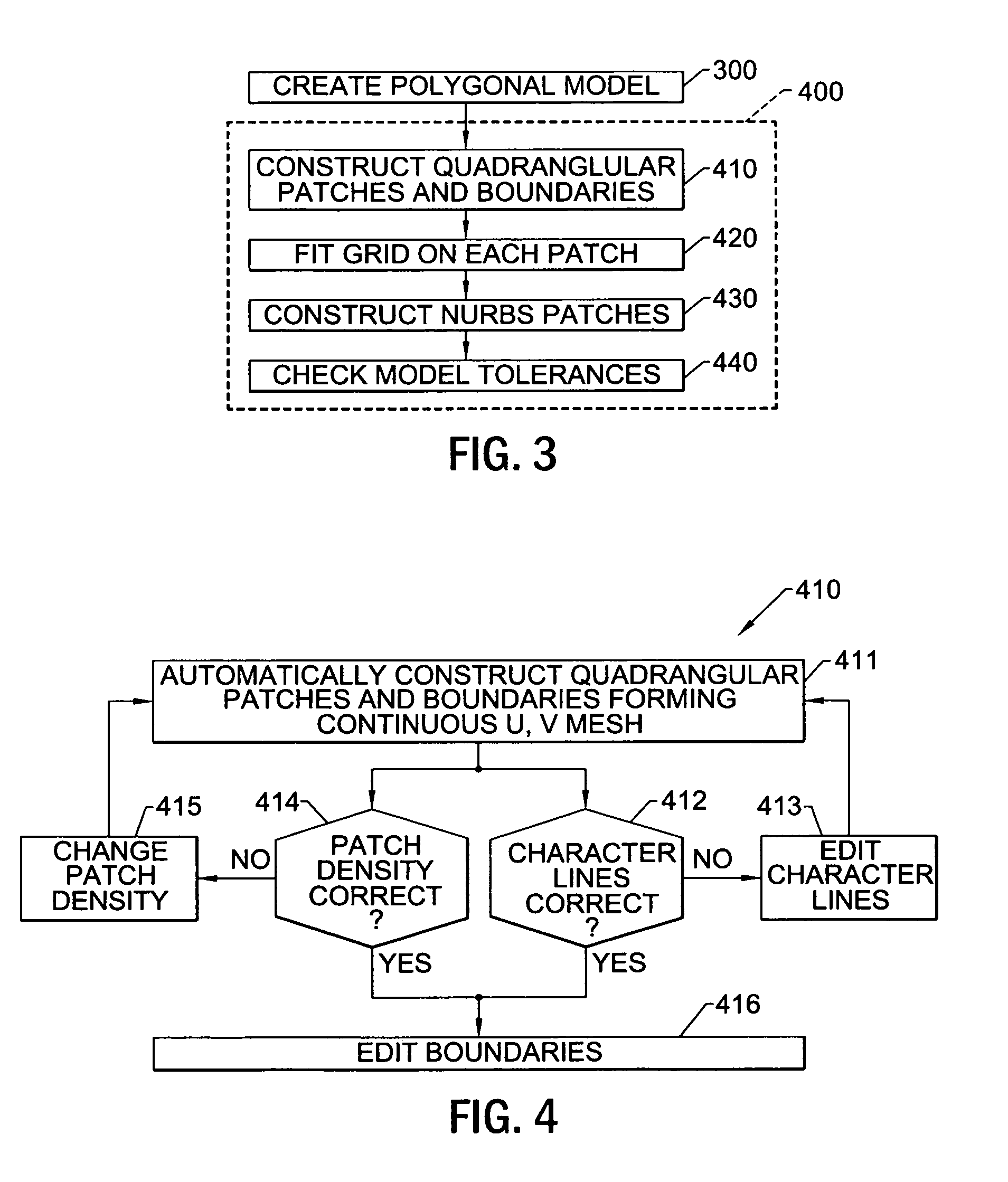Methods, apparatus and computer program products for automatically generating nurbs models of triangulated surfaces using homeomorphisms
a technology of homeomorphism and point cloud data, which is applied in the field of automatic generation of nurbs models of triangulated surfaces, can solve the problems of data generation, incompatibility with many computer-aided-design (cad) products, and many conventional cad products having difficulty converting point cloud data into polygonal models or other modeling formats that can be used with conventional cad products, so as to simplify operations
- Summary
- Abstract
- Description
- Claims
- Application Information
AI Technical Summary
Benefits of technology
Problems solved by technology
Method used
Image
Examples
case 1
[0124]Isomorphic subdivisions. Boundaries discriminate edges and vertices by the topological type of their neighborhoods. Any homeomorphism therefore maps edges of Bd1 Ki-1 onto edges of Bd1 Ki, and similar for vertices. By Fact 2 we can restrict our attention to homeomorphisms that equal the identity outside |E| and |C|. In the construction of subdivisions of E and C we distinguish between five cases. In the first three cases we have ord ab=0. By condition (1.1) the order of at least one endpoint vanishes, and we assume this endpoint is a. In the last two cases we have ord ab=1. By condition (1.2) the order of at least one endpoint is the same, and we again assume this endpoint is a. The five cases are illustrated in FIG. 18. A more detailed case analysis follows.[0125] ord ab=ord a=0 and ord b=0. In the absence of any topological constraints we can map c to any point within the open disk. To avoid excessive subdivision we map c to a point v=ιi−1(c) on ab.[0126]Case 2. ord ab=ord a...
case 4.2
[0145]We apply this reasoning to a contraction ab→c. We denote the corresponding evolution of ranks as RH(a)|RH(b)→RH(c). After eliminating symmetric cases by assuming RH(a)≦RH(b) we have eight fuzzy rank evolutions satisfying the above inequalities. Three of them are numerically unlikely, either because H(a) and H(b) share planes, or because the contraction has large error. The remaining numerically likely evolutions are illustrated in FIGS. 22 and 23.[0146]Case 1. 1|1→1. The triangles in E=Cl St{overscore (ab)} all lie almost in the same plane.[0147]Case 2. 1|2 →2. E bends sharply along a path that passes through b but does not contain ab.[0148]Case 3. 1|3→3. E bends sharply along at least three paths emanating from b, and none of these paths contains ab.[0149]Case 4. 2|2→2. E bends sharply along a path that passes through ab.[0150]Case 5. 2|3→3. E bends sharply along at least three paths emanating from b. One of these paths contains ab and continues beyond a.
[0151]Observe the sim...
PUM
 Login to View More
Login to View More Abstract
Description
Claims
Application Information
 Login to View More
Login to View More - R&D
- Intellectual Property
- Life Sciences
- Materials
- Tech Scout
- Unparalleled Data Quality
- Higher Quality Content
- 60% Fewer Hallucinations
Browse by: Latest US Patents, China's latest patents, Technical Efficacy Thesaurus, Application Domain, Technology Topic, Popular Technical Reports.
© 2025 PatSnap. All rights reserved.Legal|Privacy policy|Modern Slavery Act Transparency Statement|Sitemap|About US| Contact US: help@patsnap.com



